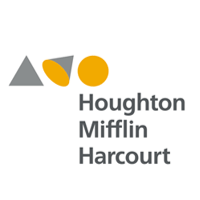In 2015, East Upper and Lower Schools—formerly East High School—in Rochester, New York entered into a unique partnership between the New York State Education Department, Rochester City School District and the University of Rochester. This Educational Partnership Organization aims to curtail a trend of academic underperformance and high rates of truancy, absenteeism and dropout, which had plagued East High for a number of years.
Leading the charge in this effort is Dr. Shaun Nelms, superintendent of East Upper and Lower Schools and director of the Center for Urban Education Success, which supports K-12 urban schools on a local and national level and aims to replicate East’s model nationwide. We sat down with Dr. Nelms to discuss the challenges and opportunities presented in this partnership and to learn what this work means for him personally.
HMH: How did this partnership come about?
Dr. Nelms: The University of Rochester was approached by the Rochester City School District’s Board of Education in Rochester, New York, to assume responsibility for East High School, which was the lowest performing school in the lowest performing district in New York State. East had already attempted several reform approaches and faced sanctions by the New York State Education Department. Among the options were school closure, state control, conversion to a charter school, removal of half the students and staff and the creation of the Educational Partnership Organization model we have now—a partnership with a local entity. The University of Rochester became that education partner.
What are the benefits of the partnership for East Upper and Lower Schools?
The university negotiated with all the local unions to have a longer school day, additional teacher pay for more hours worked, a standards-aligned curriculum and additional resources to address social-emotional support for students. It meant hiring additional counselors and social workers and partnering with community agencies that support students with high ACEs scores (adverse childhood experiences). The agencies would connect students to resources in the community.
How does the University of Rochester benefit from this partnership?
This initiative is a university-wide project with university-wide commitment that embraces our “all in” philosophy. We have students and faculty throughout the university volunteering to tutor students here. And we started hiring some of these volunteers permanently.
The school of nursing and medicine operate our health clinic, the Flaum Eye Institute has partnered with our optics program to make and distribute over 1,000 pairs of glasses, and the Eastman Institute for Oral Health provides dental cleaning on our campus. University staff have helped to produce our school newspaper and run the debate team, and even the President of the Board of Trustees at the University of Rochester, Richard Handler, has required students he supports financially to volunteer at East. These scholars, the Handler Scholars, are comprised of first-generation students at the University of Rochester from very impoverished settings throughout the world.
How has this partnership changed East?
The increased graduation rate is indicative of our students’ understanding of having a culture of life beyond high school. When we first arrived, our graduation rate was trending toward 19 percent. By the end of that year, the graduation rate was 33 percent, which is still abysmal, but by the end of year four, our rate was about 70 percent.
We’ve seen incredible growth from students going from below basic to proficient in literacy. We modified our school day schedule to double block English and math for most students. We’ve been able to use technology to identify where our student needs are academically and recreate a system based on that need.
What are your next steps?
A part of our renewal process for the next five years is to create a technical assistance center designed to help the rest of the district by sharing effective practices. We want to ensure that other schools in the county and state understand the work that we’re doing and provide them with the necessary tools, resources and knowledge should they want to implement similar programs and initiatives. The University of Rochester Warner School of Education and Human Development houses the Center for Urban Education Success, or CUES, which was designed to research and find ways to share information about the success at East more broadly.
Join HMH and Innovation for Equity at EdSurge Fusion for two separate informative sessions that will bring a fresh perspective and actionable ideas to the critical issue of educational equity:

- Leadership and Equity: Creating Change
- Disrupting Inequity: Using Design Thinking to Address Educational Inequality
What inspires you to do this type of work?
I grew up in a very impoverished community. My two brothers and I attended City Honors, a magnet school in Buffalo, New York, but my sister did not. When my sister was a junior in high school and my younger brother was in eighth grade, my sister had the same math textbook as him. I realized that, regardless of her intellectual capacity and ability, regardless of her work and motivation, if the system does not start with a standard, some kids will automatically be placed on more rigorous tracks and others will be left to a less rigorous, less aligned school curriculum and experiences.
My entire career, I’ve been fighting for equity, and the work at East is a culmination of all of that. It allows us an opportunity to create a school system in which the standard is set at a level that every kid is prepared for life beyond high school. This work is not hard work; it’s heart work.
What is the biggest challenge urban schools face today when it comes to achieving equity?
Equity is often discussed without a clear definition. For East, equity began with us truly understanding the problem that came before us. We had to honor the voice of our students, staff, parents and community. I would say the word equity and the opportunity to address it have to be defined by those who are most impacted by the inequity. If the answer is not clearly defined and valued, equity will never occur in an urban school.
A lack of clarity has plagued the education community for many, many years—we keep throwing more money and resources at a problem without fully understanding what the problem is.



